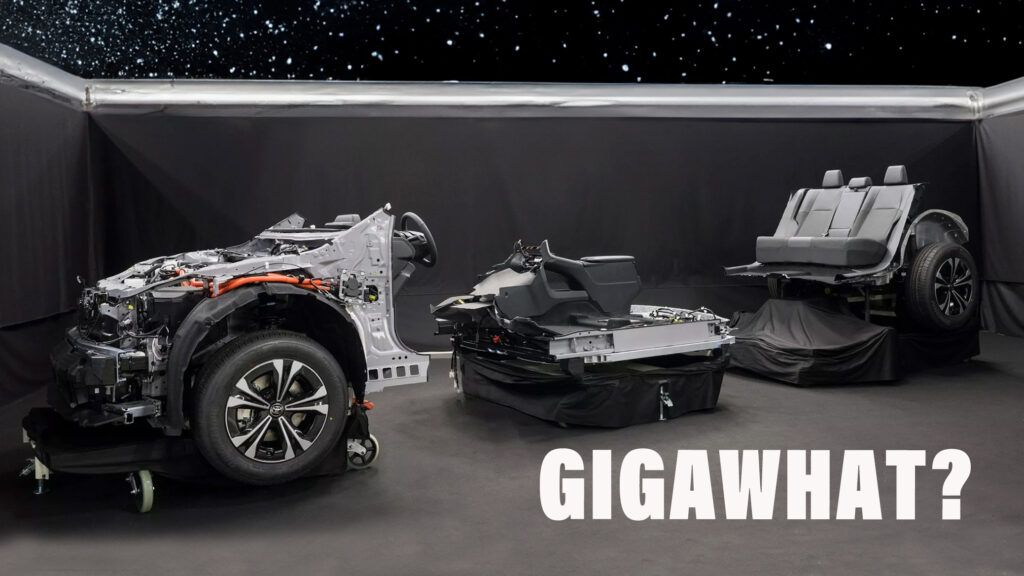Toyota and multiple Chinese brands are convinced of the benefits of this different construction method that Tesla has been using for several years
5 hours ago
 –>
–> 
–>
Gigacasting: it’s a term that’s been around for a while but seems to be suddenly cropping up in lots of automotive news stories. But what exactly is it and why are automakers like Toyota now so keen on the tech?
The term “Gigacasting” refers to casting large sections of a car in aluminum that would usually be made of of multiple smaller parts. It gets its name from, yes, you guessed it, Tesla, whose Giga Presses at its factories in the U.S., China and Germany, take in a big dollop of molten aluminum weighing almost 180 lbs (82 kg) and force it into a mold under huge pressure (6-9,000 metric tons) before releasing so that the newly formed component can be quickly cooled. Though there’s nothing new about casting, it’s traditionally been used for smaller components using less pressure.
Related: Toyota Shows Its Own Gigapress That Cuts EV Production From Hours To Minutes
advertisement scroll to continue
[embedded content]
Building a car from fewer components helps cut down on production costs: Tesla says the Gigacast section used in the rear of the Model Y allowed it to cut costs associated with the SUV’s build by 40 percent, and applying the tech to the Model 3 removed 600 robots from the assembly line. But just as importantly for an EV, casting large components as one can help reduced curb weight, making a car handle better and travel further on a battery charge, or travel the same distance on a smaller battery, thereby making the vehicle cheaper.
Tesla is working on the next step of its casting journey, which would allow it to cast an entire EV floor structure as once single component, and now other carmakers are jumping on the tech, partly in an effort to keep pace with Tesla. Toyota recently showcased its own Gigacasting tech, claiming that it could cut the production process from several hours to just three minutes, but it’s arguably the Chinese that have really begun to embrace the possibilities. Nio’s ET5 and Geely’s Zeekr 009 both feature single-section gigacast rear floors, while Xpeng’s G6 has a gigacast front section including shock towers plus a one-piece rear floor, S&P Global Mobility reports.
There are a few drawbacks to the tech, however, aside from its huge setup costs. One is that the reject rate for parts during production could be a problem because you’re combining what would normally be multiple components, meaning one small fault on one side could write off the entire piece, and by the same token it could be difficult and expensive to repair frame damage.
[embedded content]
Our huge casting machines enable us to make full-size cars the same way toy cars are made ✌️ pic.twitter.com/pWvW5Ovufo
— Tesla (@Tesla) July 25, 2022

 <!–
<!– –>
–> 
